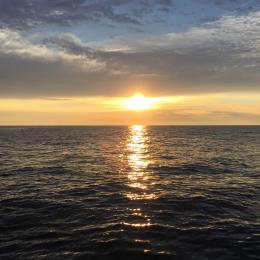About Us
Mission
Science-driven solutions™ for Gulf problems.
Vision
An ecologically and economically sustainable Gulf.
HRI is set apart from other marine research institutions by its use of the HRI Model, a unique interdisciplinary way of working that integrates our science with economic, policy and sociological expertise. While our solutions are science-driven, the challenges facing the Gulf can't be solved by science working alone. HRI scientists are encouraged to think broadly and pursue partnerships to create lasting solutions.
Our science aims to reach beyond the traditional academic environment. Grounding policy in sound science and working to bridge disciplines is even more important as we face growing environmental challenges like climate change.
Human and environmental health are inexorably linked. It is critical to understand the relationship between people and their environment so that sustainable management decisions can be adopted.
Our objective is to think beyond basic science to address the pressing conservation issues facing the Gulf today. HRI plays the role of impartial broker, bridging the gap between science and policy on decisions that have real world outcomes.
Growing populations put increased pressure on natural resources. Economics provides tools to address conservation and sustainable growth by helping us to better understand the benefits, tangible and intangible, that we gain from the environment.
Founded by a generous donation from local publisher and noted conservationist Ed Harte, the Harte Research Institute at Texas A&M University-Corpus Christi has spent the last 25 years working to ensure a sustainable Gulf.
Edward H. Harte — the man behind the mission
Ed Harte’s $46 million endowment to create the Harte Research Institute at Texas A&M University-Corpus Christi stands first among the many important and valuable contributions the newspaper magnate made to environmental preservation and conservation science during his lifetime.
Harte had a distinguished career in the newspaper industry, eventually serving as the long-time publisher of the Corpus Christi Caller-Times. A passion for preserving the Gulf Coast environment he made his home drove him to become a leader in conservation. Learn more about his life, career, and commitment to the environment.
Why focus on the Gulf? With its diverse habitats and unique status as an economic engine producing energy and food to fuel a nation, the Gulf can be a laboratory to find the balance between economic and environmental health — a sustainable balance that benefits both us and future generations. To better understand the Gulf, let's take a look at some numbers.

